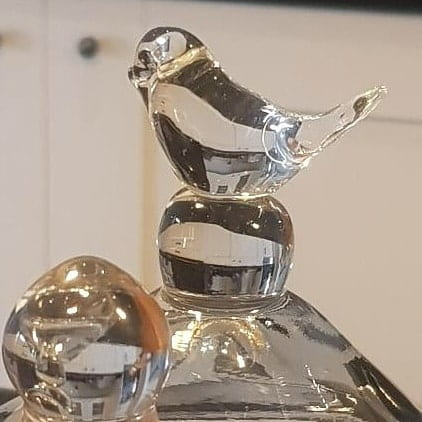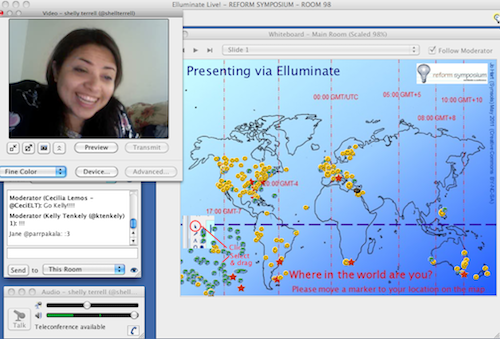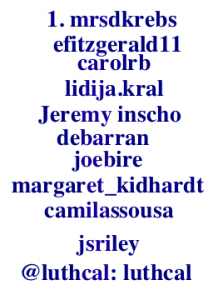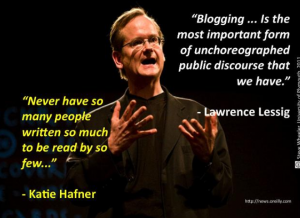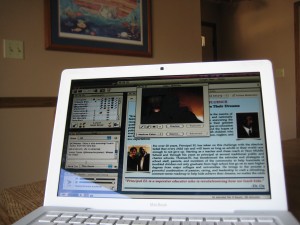I am becoming sedentary. I can’t help it. I sit at this table for what our school is calling the Virtual Learning Initiative. The virtual learning is coming along, and still I sit. How can I walk and answer emails at the same time? Hmm…that reminds me! Maybe an aerobic exerciser hooked to my table will be my next household chore invention.
That was on Tuesday–the day for my second lesson; it was definitely better than the first. I’ve had lots of fun responses to our Flipgrid topic of making a household chore invention. The time it took children to complete this lesson was more realistic and has been leading to success for all.
This morning, I continued answering all my emails at least every 15 minutes. Often it takes me 15 minutes to give detailed feedback, activate the Flipgrids, and answer questions. Then when I check back more have come in, so I have been working constantly for a few hours this morning.
Then I got distracted when I laid eyes on my #100DaysofNotebooking notebook. Oh, I forgot to post yesterday, I said to myself. I picked up my notebook. It was still yesterday in the U.S., so I posted a lesson idea I worked on yesterday. Then I thought about today’s entry, and I got a bit lost in creativity.
I keep a box of word cutouts on my table, inspired by fellow Slicer and #100DaysofNotebooking notebooker, Donnetta Norris. My box called out to me this morning, so I made up a quick challenge. Choose five random words and use them in a story.
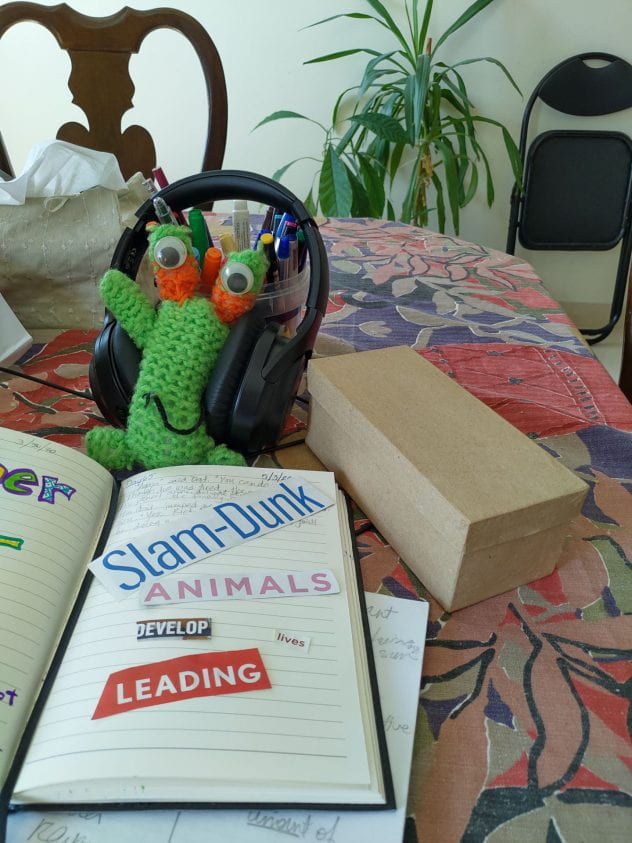
OK, I thought. I can do this. Forty-five minutes later I came up for a breather, and (oops) to check my email again.
We all need that once in a while, even when we miss the 15-minute email challenge.
Here is the result of my Five Random Words Challenge (leading, develop, lives, animals, slam-dunk)…
“Try again,” said Dad. “You’re close. You can do it!”
The son tried one more time. His pencil arms, delicate and coursing with bad blood, swung like a pendulum and let go of the ball. The thud against the metal rim before it hit the earth was music to the ears of the father and son.
“You did it!” Dad jumped up and down, lifting the boy onto his shoulders, leading the two-person parade, celebrating the success of his little boy. It was the first time he had managed to get the regulation-sized ball all the way up to the rim.
Bad blood. There was no ill will or anger in the boy’s blood or relationships. Rather it was leukemia. Recently-diagnosed, the cancer had not deterred the boy from trying to develop his hoop skills.
He is only five years old. Why do the gods toy with the lives of children? Animals! Dad would weep into his pillow, making demands during his nighttime wrestling.
But when morning came, he willed himself to be a new man, celebrating the successes of his boy.
“You hit the rim! I’ll call you Rick Barry Boy now! You’ll be the next underhanded free thrower. Next time you’ll sink the shot, I’m sure. After that, who knows? Maybe a slam-dunk contest! For now, let’s go home and rest.”

